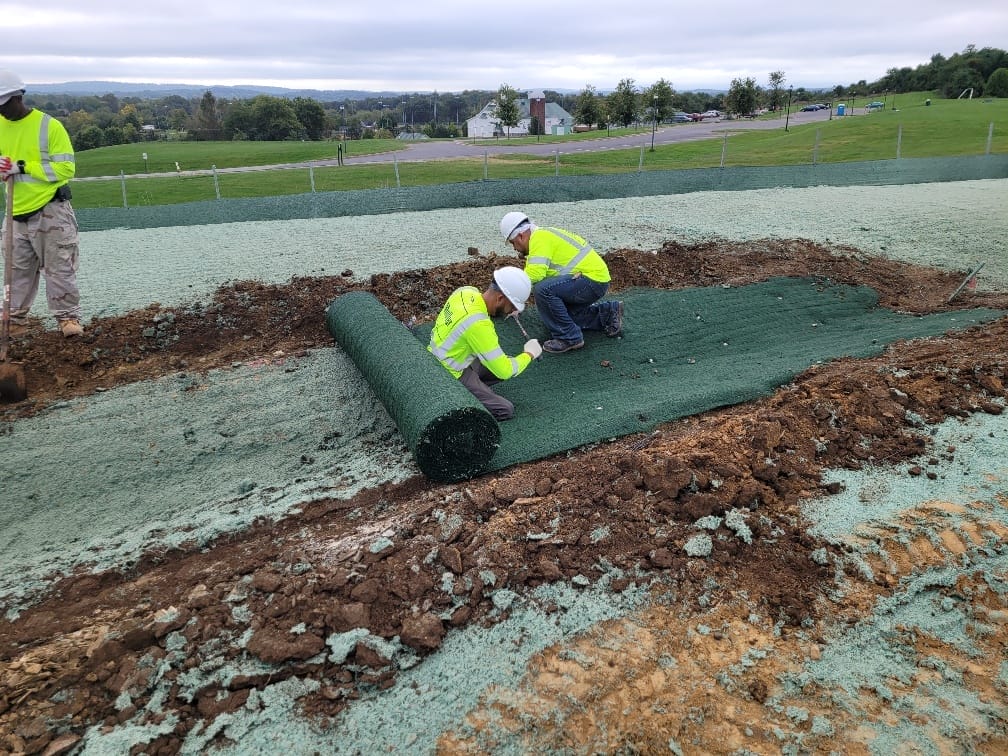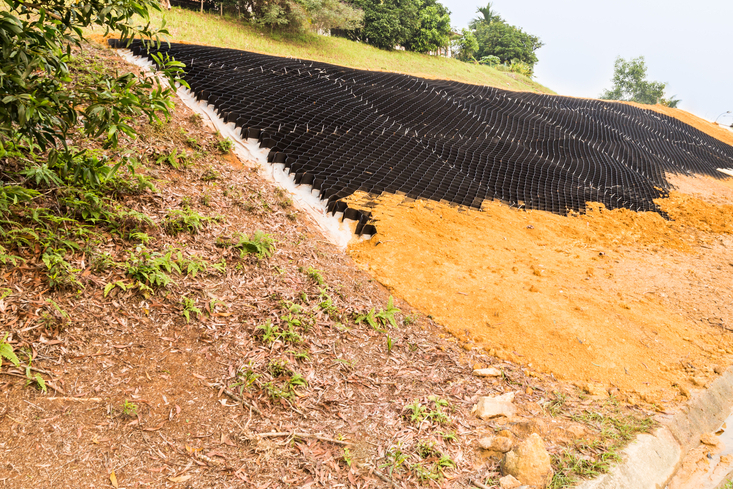Erosion Control Solutions: Safeguarding the Atmosphere
Wiki Article
Best Practices for Erosion Control in Building And Construction Projects
Are you working on a building job and concerned concerning disintegration control? Look no additional! In this write-up, we will certainly lead you via the ideal practices for stopping erosion on your website. You'll discover five crucial techniques, efficient sediment and runoff administration approaches, essential considerations for incline stablizing, and pointers for shielding plant life and soil. We'll also delve into the value of executing appropriate drainage systems. Get ready to take on erosion head-on and make sure the success of your building task.5 Necessary Disintegration Control Methods

To effectively regulate erosion on your building website, you'll need to carry out crucial methods such as incline stablizing and debris control actions. Slope stablizing is critical in preventing dirt erosion on steep inclines. You can achieve this by using techniques like terracing, which involves producing horizontal actions on the incline to decrease water circulation and advertise the absorption of rain. An additional efficient technique is the usage of erosion control blankets or mats, which are positioned on the slope and help maintain soil bits while enabling plants to grow. Debris control procedures are also vital to stop sediment runoff right into nearby water bodies. One reliable technique is the installment of silt fences along the border of the building website. These fences function as barriers, catching sediment-laden water and permitting it to work out prior to it reaches the water bodies. Furthermore, you can make use of sediment basins, which are short-lived retention ponds created to catch sediment and enable water to gradually drain pipes off. Executing these crucial erosion control methods will certainly aid reduce the unfavorable ecological influence of your construction project and guarantee conformity with laws.
Efficient Sediment and Overflow Management

You can efficiently take care of sediment and runoff in your building and construction job by carrying out proper disintegration control measures. Sediment and overflow monitoring is essential to protect against erosion and safeguard the surrounding atmosphere. One reliable measure is the installation of silt fences along the boundary of the building and construction website. These fences help to include debris and stop it from getting in neighboring water bodies. Another essential method is the application of disintegration control coverings or floor coverings. These coverings give a safety layer on bare dirt, reducing the effect of rains and preventing erosion. Additionally, the use of sediment basins or sediment traps can help to catch sediment and prevent it from entering stormwater systems. Regular maintenance of these measures is vital to ensure their effectiveness throughout the construction project. This includes cleansing and evaluating debris containers and on a regular basis changing silt fences and erosion control blankets as required. By applying these disintegration control procedures, you can successfully handle sediment and runoff in your construction project, decreasing the effect on the atmosphere and adhering to regulatory needs.
Key Factors To Consider for Slope Stablizing
When thinking about incline stablizing, it is necessary to assess the surface and identify prospective locations of instability. You need to meticulously analyze the incline's characteristics, such as its make-up, drainage, and Memphis Erosion Control Solutions erosion control angle patterns. Try to find indicators of erosion, such as subjected origins, splits, or slumping soil. These signs can offer you a concept of where stabilization steps might be essential.As soon as you have identified the unsteady areas, you can begin executing procedures to support the slope. One typical technique is making use of maintaining wall surfaces or terracing to produce a collection of flat steps, which can assist distribute the weight and avoid further erosion. Another alternative is to grow plants on the incline, as the roots can aid anchor the dirt and control erosion. Additionally, installing erosion control blankets or mats can offer immediate protection while vegetation comes to be well-known.
It's crucial to frequently keep track of the maintained inclines to ensure their performance. Maintain an eye out for any indicators of motion or erosion, and take prompt action if necessary. Routine maintenance, such as evaluating and repairing any broken measures, is additionally important to ensure lasting stability.
Ideal Practices for Greenery and Dirt Defense
If required,One reliable way to safeguard plant life and soil on inclines is by routinely examining for indicators of disintegration and taking immediate action. By being aggressive and observant, you can prevent additional damages and guarantee the security of the incline. Start by examining the incline for any kind of signs of disintegration, such as subjected origins, bare dirt patches, or debris buildup near the bottom. It is critical to address the issue quickly if you discover any of these indications. Implement disintegration control actions such as setting up erosion control coverings, mulching, and even building maintaining wall surfaces if required. In addition, growing vegetation can considerably assist in supporting the soil. Select native plants that have deep root systems, as they are extra efficient in preventing disintegration. See to it to frequently examine the health and wellness of the plants and give essential upkeep, like watering and feeding. Bear in mind, disintegration can promptly get worse and create extreme damages, so it's vital to resolve it immediately. By taking proactive measures and regularly monitoring the incline, you can shield the plants and soil, guaranteeing the long-term security of the area.Implementing Correct Drain Systems
To successfully execute correct drain systems, it's vital to think about the slope gradient and dirt kind. Recognizing these aspects is essential when it comes to handling water circulation and avoiding disintegration. The slope gradient plays a considerable duty in identifying exactly how water crosses the land. Steeper inclines can bring about faster water flow, raising the risk of erosion and flooding. On the various other hand, gentler inclines permit water to flow a lot more gradually, reducing erosion capacity. By analyzing the incline gradient, you can design an efficient water drainage system that suits the natural water movement.Soil type also influences drain system layout. Various dirt kinds have differing degrees of permeability, influencing just how water is taken in and drained pipes. For instance, sandy dirts often tend to drain pipes faster as a result of their crude appearance, while clay dirts have a slower drain rate because of their compact nature. Recognizing the soil type helps in picking ideal drain methods, such as using absorptive products or setting up French drains. In addition, taking into consideration the dirt qualities helps prevent waterlogging, which can bring about bad plant growth and damages to frameworks.
Conclusion
In conclusion, when it comes to erosion control in building tasks, you have to adhere to these finest practices. Consider incline stablizing approaches to guarantee the security of the website. By adhering to these vital techniques, you can properly regulate disintegration and ensure the success of your construction project.To efficiently manage disintegration on your building website, you'll need to carry out necessary strategies such as incline stabilization and sediment control steps. Slope stabilization is crucial in preventing soil disintegration on high inclines. One more effective technique is the use of disintegration control coverings or floor coverings, which are put on the slope and aid maintain dirt fragments while enabling greenery to grow. Another alternative is to grow greenery on the slope, as the origins can assist anchor the dirt and control disintegration. Implement erosion control measures such as mounting disintegration control blankets, mulching, or also creating keeping walls if required.
Report this wiki page